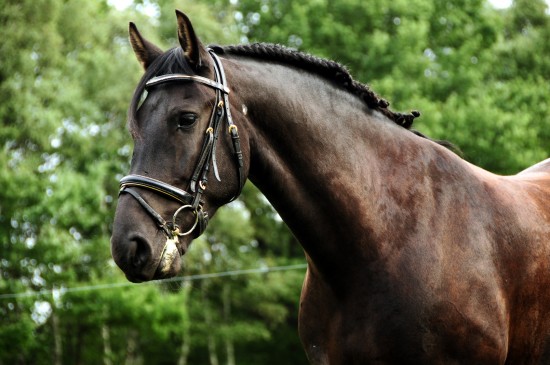

Even if your horse is ridden regularly and is in peak physical condition, it is important to take special care of them after they have taken part in particularly vigorous exercise. Whether you are going on a particularly long and energetic ride, are spending the day competing in a show or are going out for a full day ride such as attending a drag hunt or going to the beach, how you care for your horse afterwards is important for your horse’s well being and recovery.
Read on to learn all about how to care for your horse after a particularly energetic day’s work.
Taking care of your horse after vigorous exercise actually begins while you are still riding; towards the end of your ride, make sure that you drop the pace and cool your horse down before stabling them or loading them into your lorry or trailer for the trip home. If you have been riding for a long time, spend at least the last half hour of your ride working at a more sedate pace, walking and letting your horse’s muscles relax, and allowing their body temperature to cool off. If your horse has been sweating, the sweat should be almost dry and lukewarm or cool to the touch by the time you dismount. If you are competing at a show and it is not practical to ride your horse to cool them down after the event, walk them on foot until this has been achieved.
Wait until your horse is calm and relaxed before stabling them, and that they are completely cool. It is important to offer water to your horse after a long, energetic ride, possibly laced with electro-salts to replace the nutrients and minerals lost through sweating. However, do not simply offer your horse a chilled bucket of water and let them drink their fill; this can potentially lead to colic, or a quick drop in body temperature. Make sure that your horse’s water is not chilly, and allow them to drink a little bit at a time over the course of half an hour to an hour. Always offer water before food, and once you leave your horse for the night, make sure they have plenty of water available to them.
It is a good idea to groom your horse after a busy ride, to help to massage the muscles and remove dried-on sweat. Keep an eye on your horse’s temperature and make sure they do not become cold, and do not rug up your horse until they are totally dry.
Once your horse has had enough water administered gradually and is calm and relaxed, it is time to give them their feed. Your horse will probably be very hungry by this point, as they have expended a lot of energy throughout the day!
Historically, received wisdom used to dictate that the best food for a horse after heavy exercise (such as a day’s hunting) was a bran mash, as this is nutritious and easily digestible. However, unless this is what your horse usually eats, steer clear of feeding this or anything else that is significantly different to their normal food, as changing your horse’s food suddenly can lead to upset stomachs and other problems. Stick to your horse’s normal food ingredients, but possibly give them a little extra to account for the extra work they have done.
If your horse is a fast eater or prone to bolting their food when very hungry, place a large rubber ball or another obstacle that is too large to digest within their food bowl, which will force them to eat around it and slow them down.
Make sure your horse has plenty of hay or other roughage to eat throughout the evening and night, and expect them to potentially eat more of it than normal.
Do not plan a vigorous ride or other heavy exercise the following day, but make sure that your horse gets the chance to stretch their legs. If they are stabled full time and not turned out to graze, take them for a sedate walk around for half an hour to an hour, to let them loosen up their muscles and work out any stiffness.
Remember that if your horse will not be worked for several days following a bout of vigorous exercise, you will have to reduce your horse’s food portions and possibly remove some of the more calorific grains to account for this.
If you keep feeding your horse the quantity and type of foods that are intended to support vigorous exercise while they are in fact sedentary, you run the small but significant risk of inducing a bout of azoturia. Azoturia is a painful cramping muscle condition that is associated with a sudden break after vigorous exercise if the change of activity level is not taken into account.
You can prevent this by ensuring that you cool your horse down properly after exercise, and moderate their food intake on the days when they are expending fewer calories.
Copyright © 2005-2016 Pet Information All Rights Reserved
Contact us: www162date@outlook.com